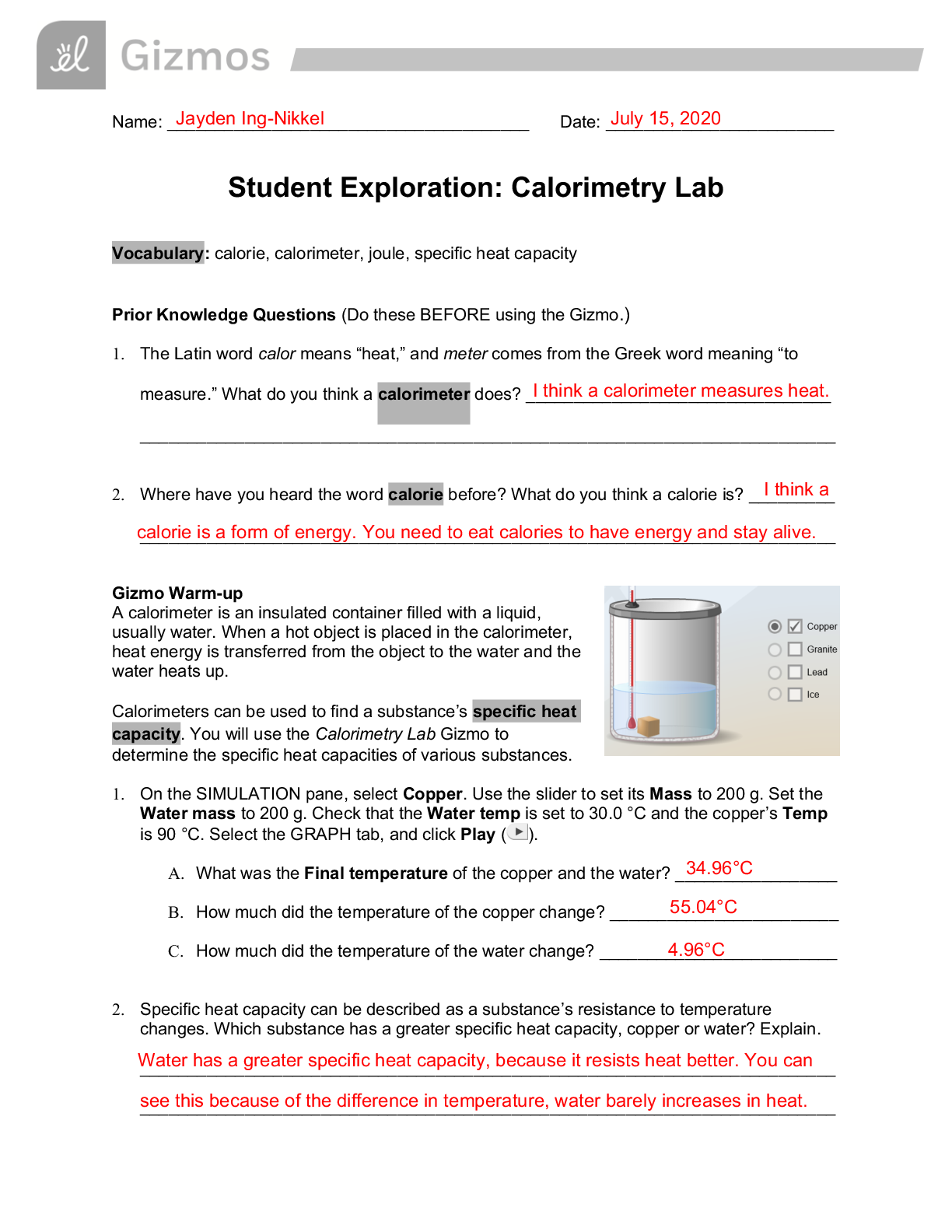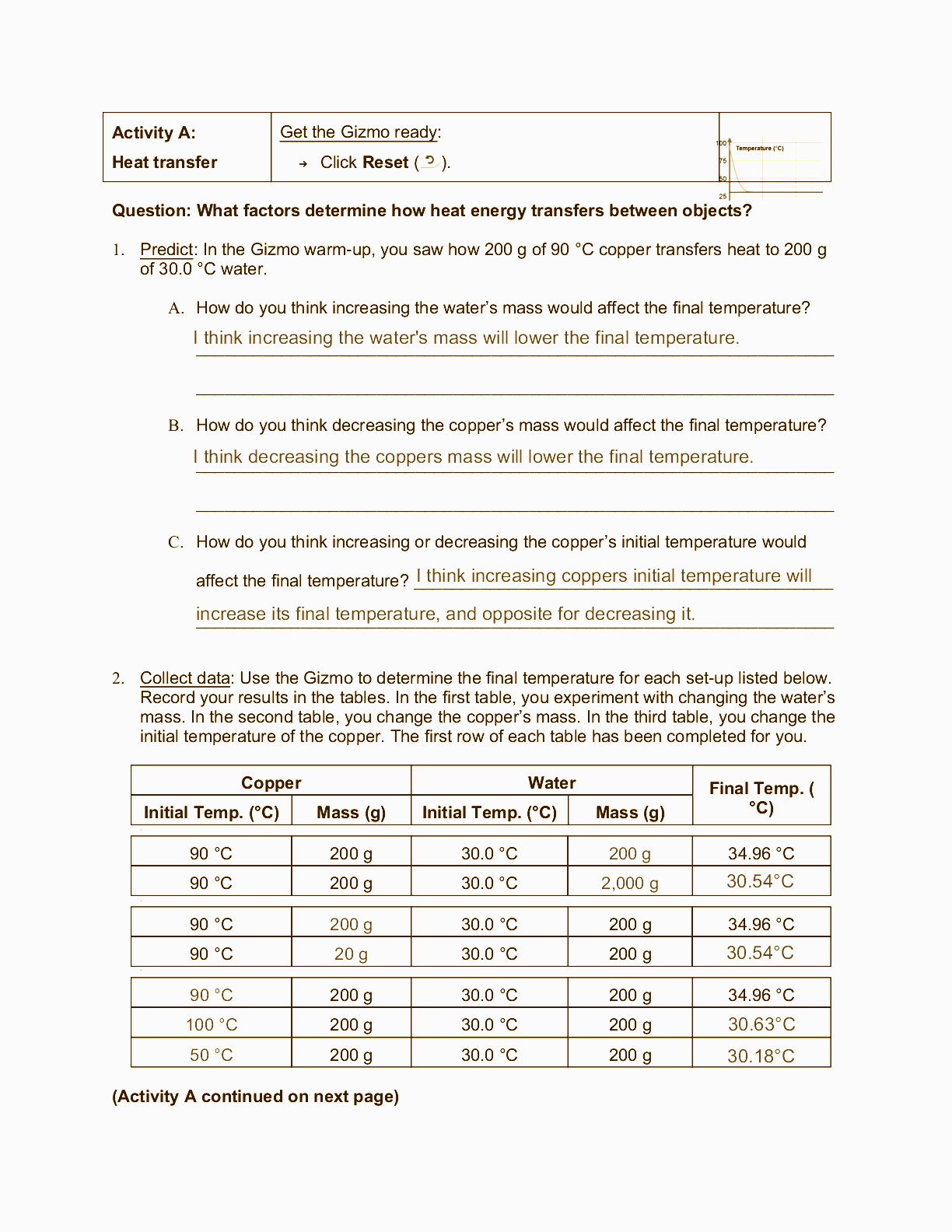Calorimetry lab gizmo student Exploration mid 2020 verified answers
Course
Anthropology
Subject
Physics
Category
Case Study
Pages
7
Uploaded By
ATIPROS
Gizmo Warmup
A calorimeter is an insulated container filled with a liquid, usually water. When a hot object is placed in the calorimeter, heat energy is transferred from the object to the water and the water heats up.
Calorimeters can be used to find a substance’s specific heat
capacity. You will use the Calorimetry Lab Gizmo to
determine the specific heat capacities of various substances.
1. On the SIMULATION pane, select Copper. Use the slider to set its Mass to 200 g. Set the
Water mass to 200 g. Check that the Water temp is set to 30.0 °C and the copper’s Temp
is 90 °C. Select the GRAPH tab, and click Play ( ).
A. What was the Final temperature of the copper and the water? _________________
B. How much did the temperature of the copper change? ________________________
C. How much did the temperature of the water change? _________________________
2. Specific heat capacity can be described as a substance’s resistance to temperature
changes. Which substance has a greater specific heat capacity, copper or water? Explain.
Question: What factors determine how heat energy transfers between objects? 1. Predict: In the Gizmo warmup, you saw how 200 g of 90 °C copper transfers heat to 200 g of 30.0 °C water.
A. How do you think increasing the water’s mass would affect the final temperature?
B. How do you think decreasing the copper’s mass would affect the final temperature?
C. How do you think increasing or decreasing the copper’s initial temperature would affect the final temperature?
2. Collect data: Use the Gizmo to determine the final temperature for each setup listed below. Record your results in the tables. In the first table, you experiment with changing the water’s mass. In the second table, you change the copper’s mass. In the third table, you change the initial temperature of the copper. The first row of each table has been completed for you.
3. Analyze: For each factor listed in the chart below, explain how the final temperature was changed and why you think that change occurred.
4. Draw conclusions: The amount that the water’s temperature increases depends on the mass of the water and the amount of heat energy in the copper.
5. Apply: Many gyms and health clubs have steam saunas, which are small steamfilled rooms.
Traditionally, steam saunas have a container of heated rocks. A small ladle of water is
poured on the rocks in order to make the steam.
Preview 2 out of 7 Pages


Download all 7 pages for $ 15.00
Reviews (1)
Satisfactory! Big help with studying the material
$15.00
